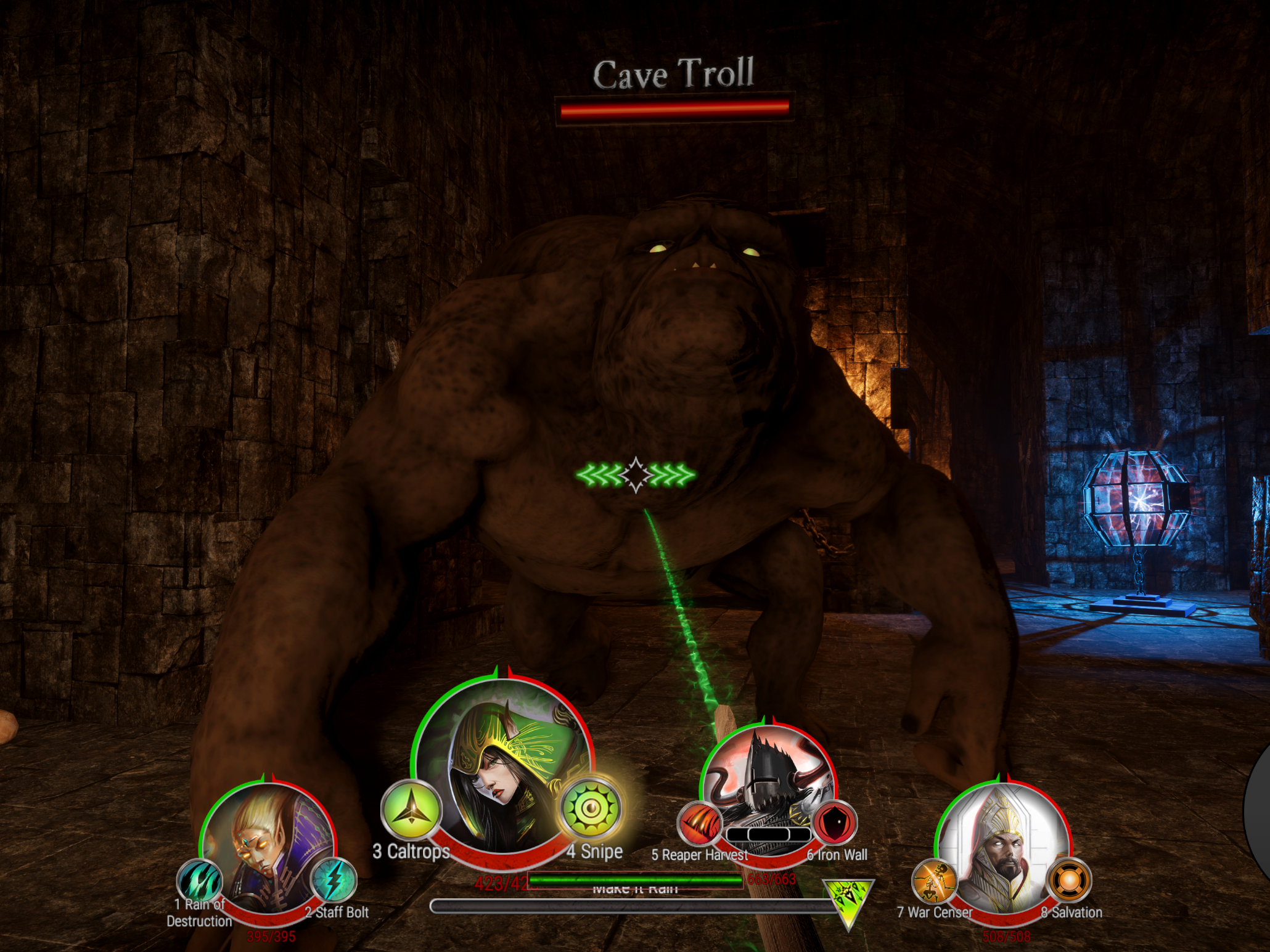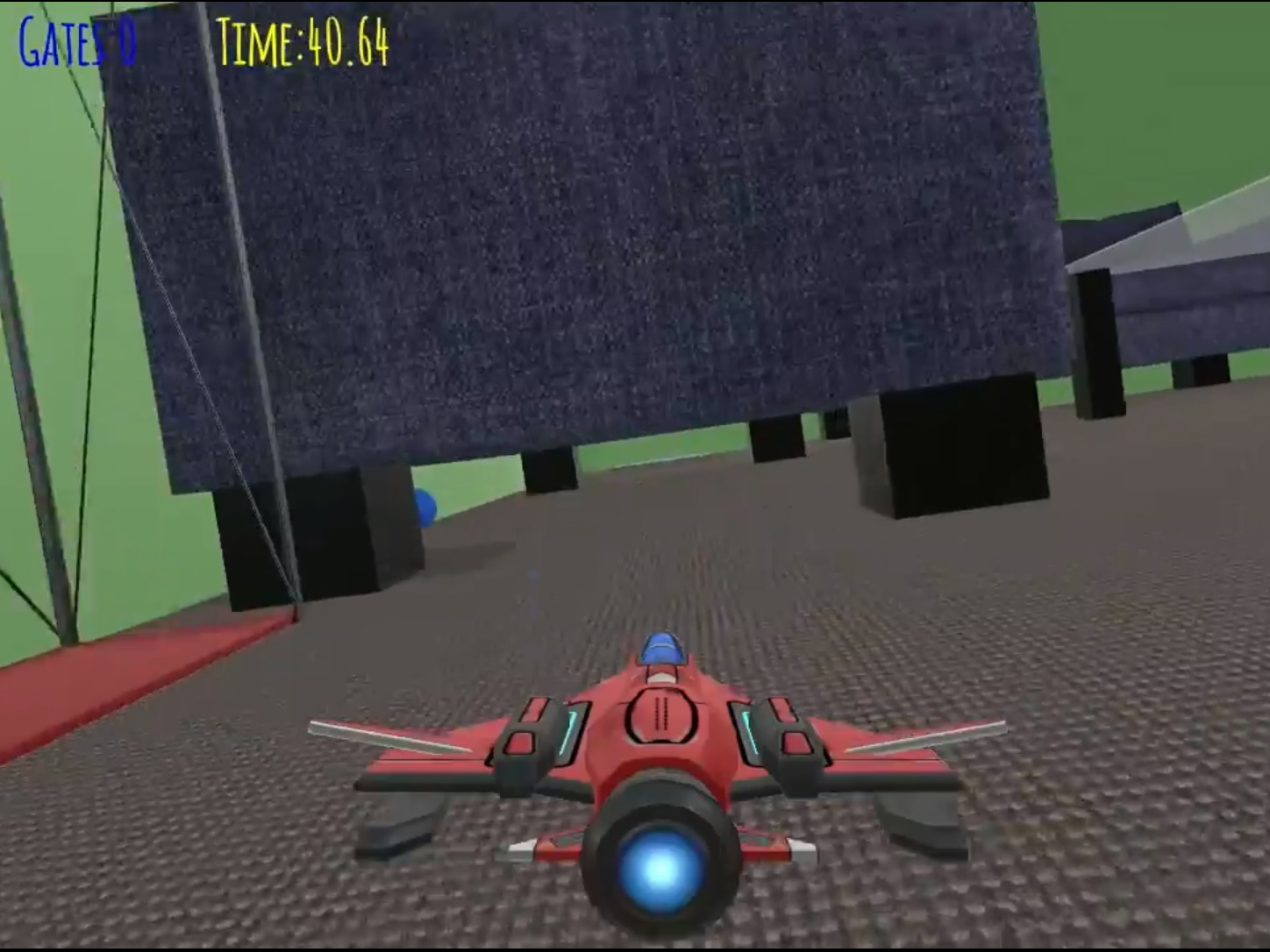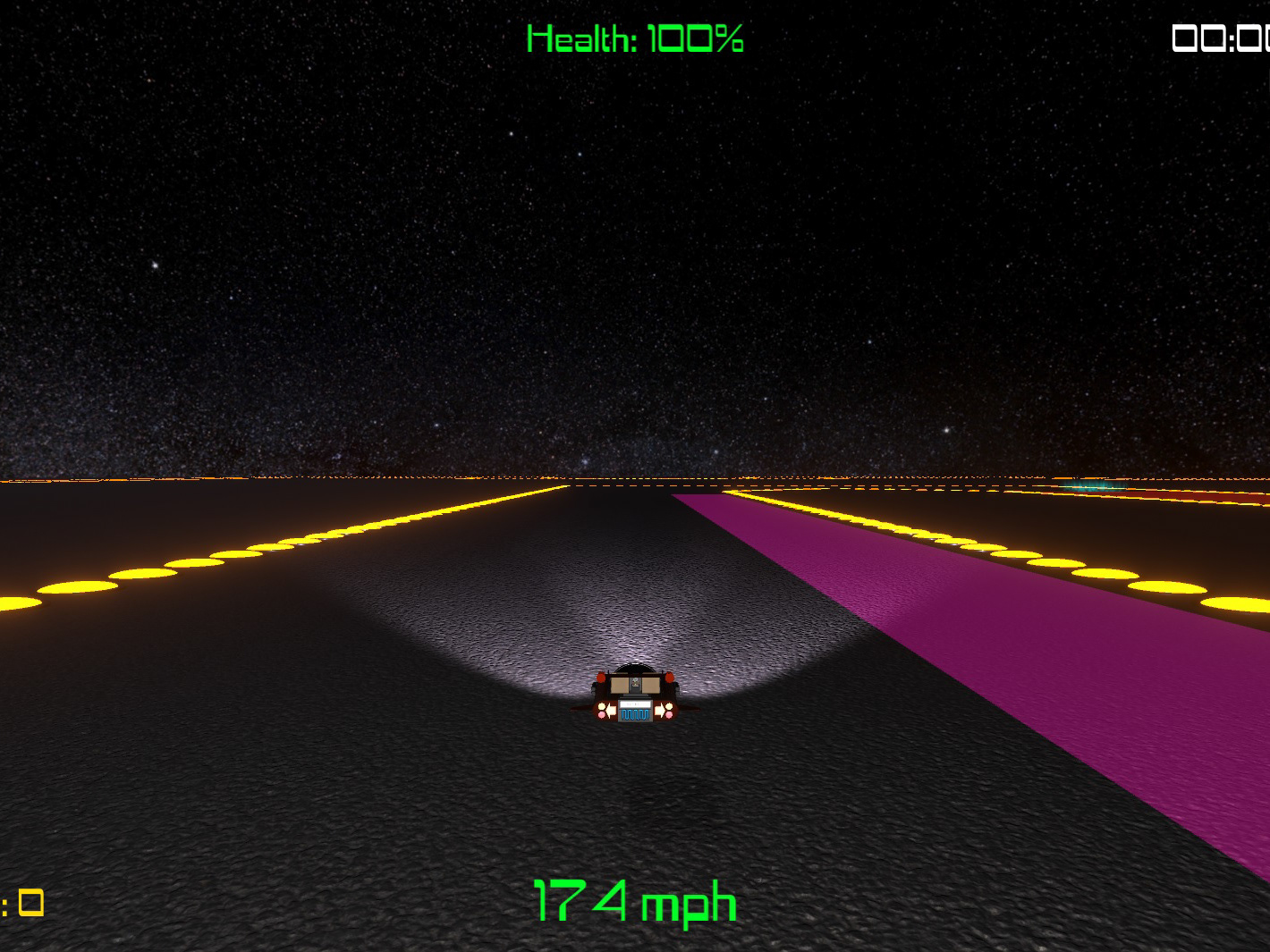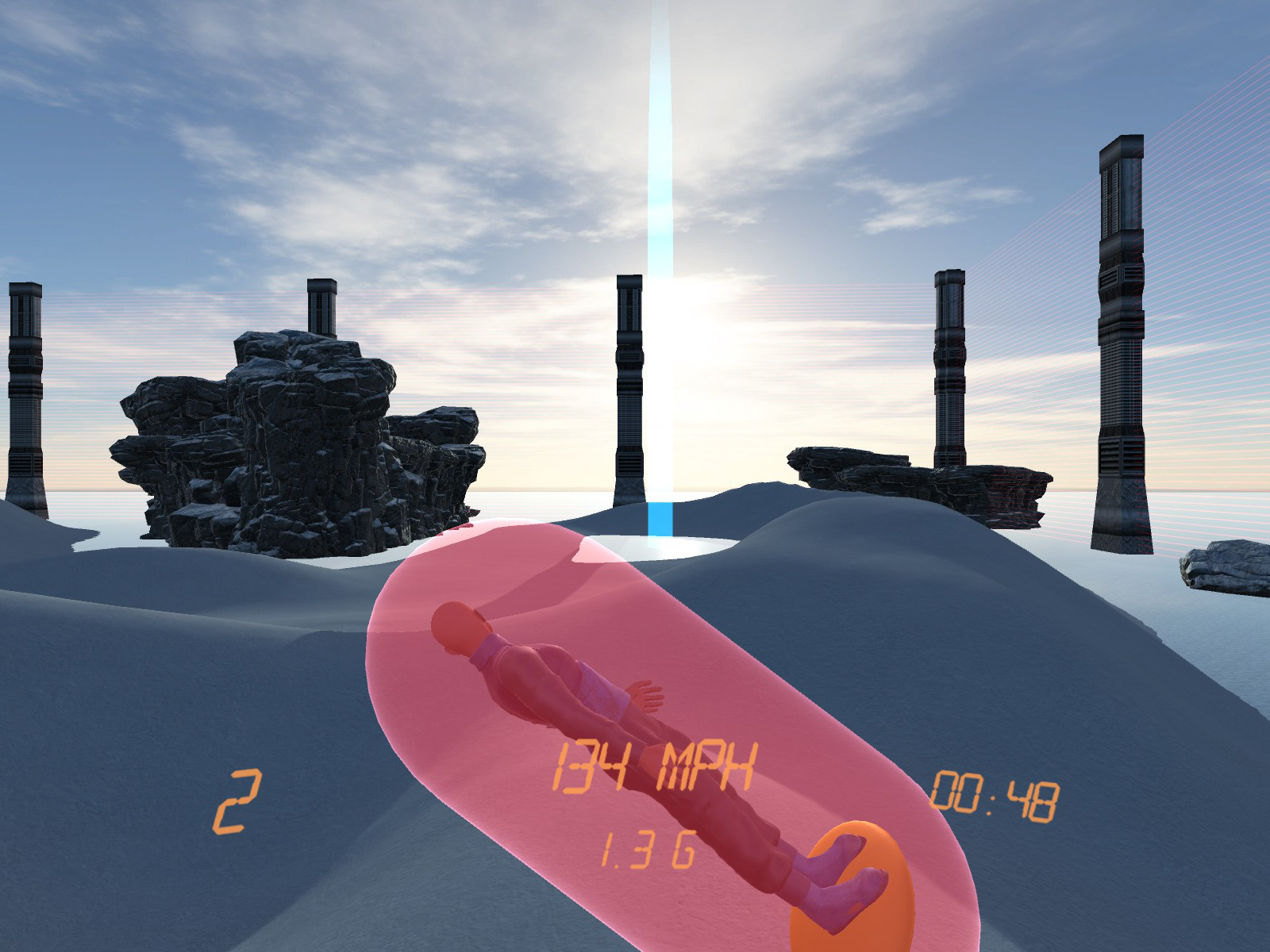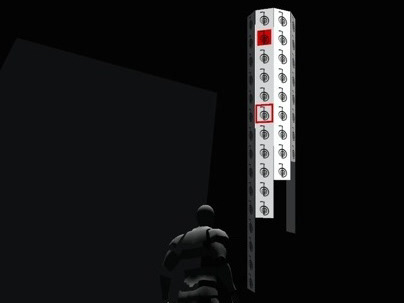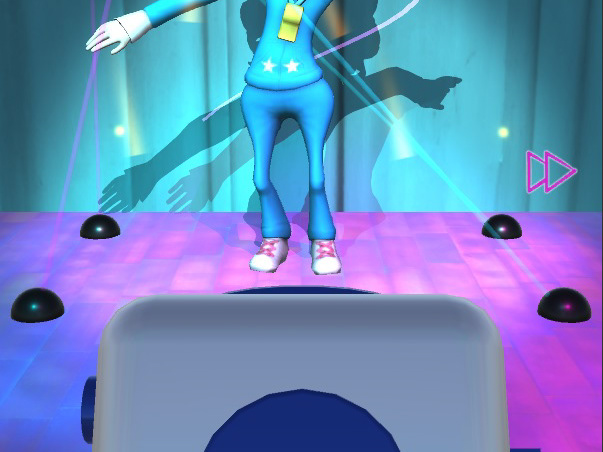Stem began as a semester long solo project for a game development course at College of Marin in Spring of 2018. It is a prototype first person shooter based on a novel of the same name that I am currently writing. I picked the project back up in Winter of 2019 to satisfy an assignment for a serious games course that was part of UC Santa Cruz's Games and Playable Media program. The game features a highly detailed, accurate hunger/thirst/sleep system, and its model of physique and metabolism as the basis for an RPG character progression system. For the serious games assignment, our team of four students built a separate Nutrition Simulation mode that lets players focus on building a healthy character through diet and exercise. My contribution to that part of the project consisted of programming and design, while the rest of the team focused on UI art, design, and level building.
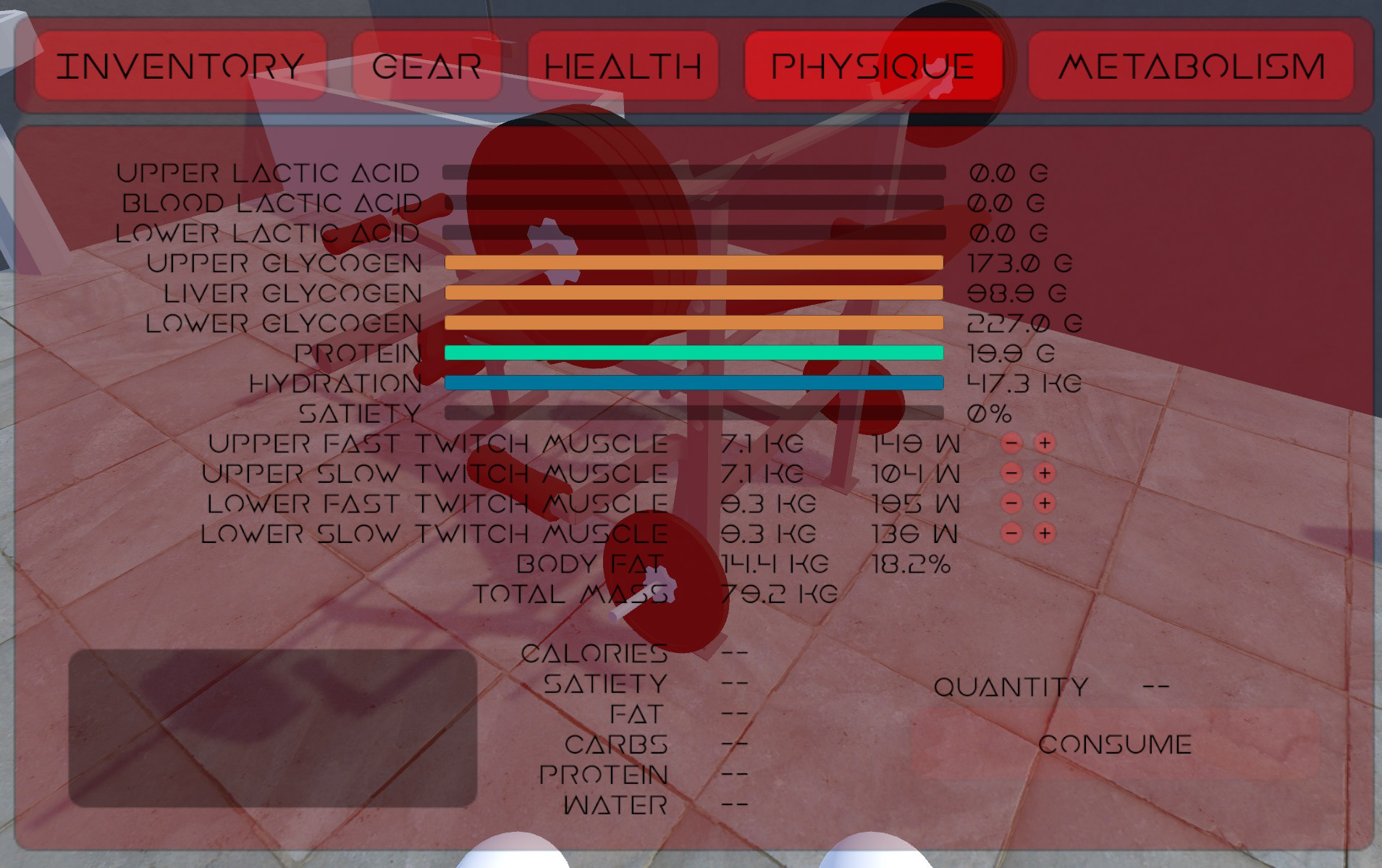

The primary objective of the serious game stage of this project was polishing the UI to more cleanly present the wealth of data generated by the model. The image on the left shows the original Physique Menu, which communicates all of the various stats on one page. The image on the right shows a revised Metabolism Menu that separates that information out into a series of tabs and presents it in a more informative graphical format.
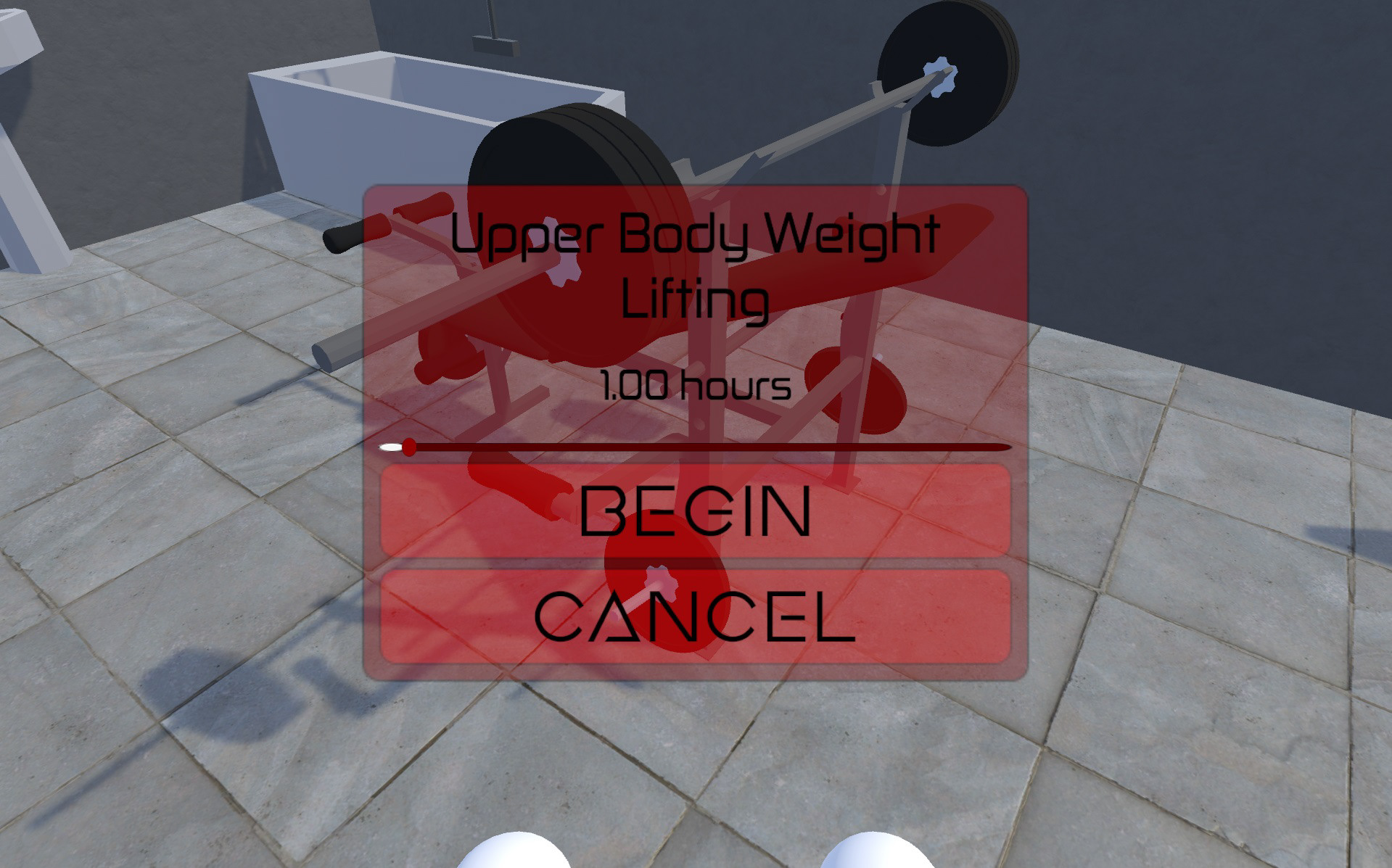
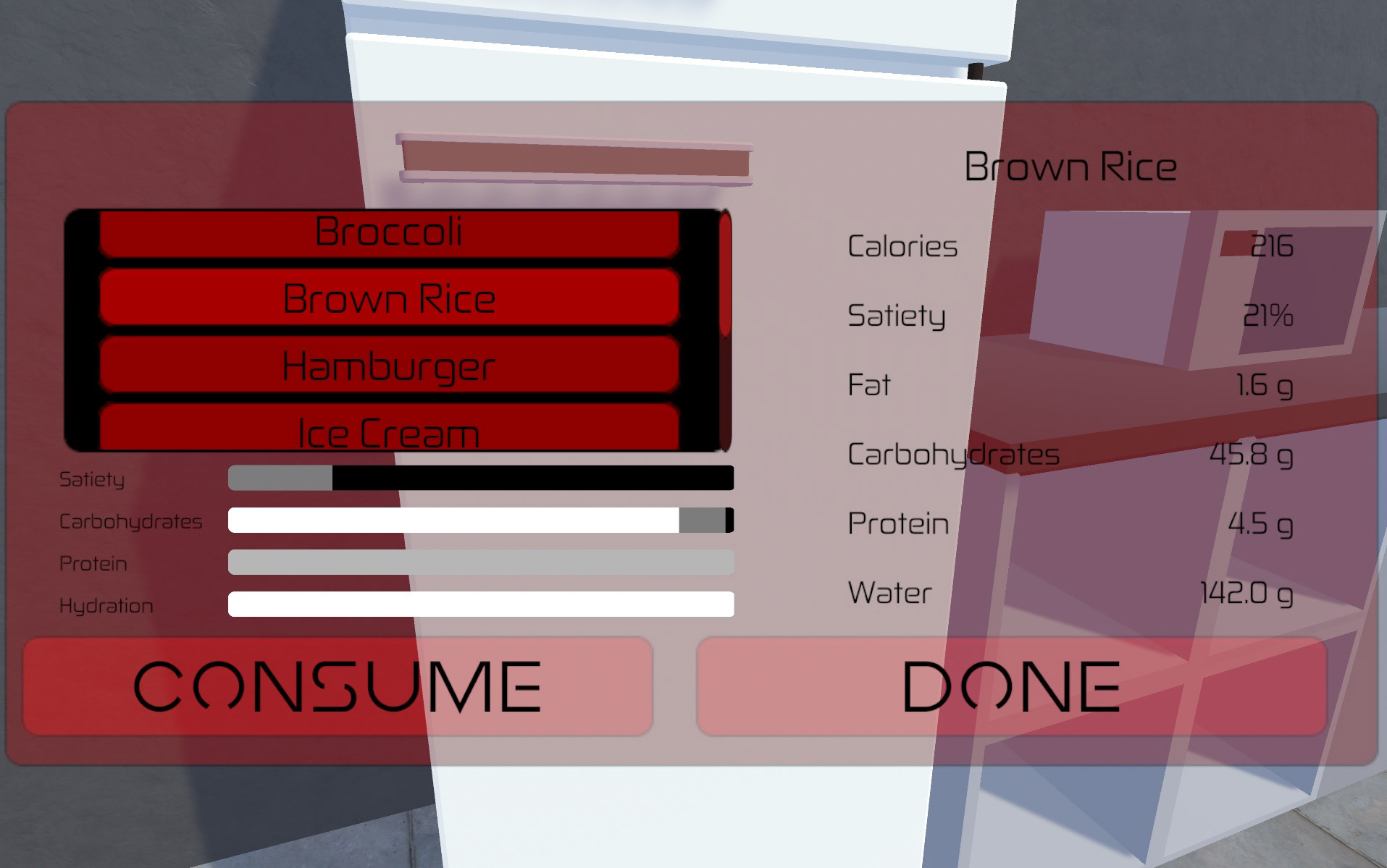
The secondary objective was to create a system for the player to manage their character's diet and exercise. In the main game, actions are performed by playing the game, e.g. sprinting from one location to another, swinging a sword, etc. The nutrition sub-game presents a more comprehensive selection of activities, like various exercises and rest. These actions are performed by activating a model representing the activity, like a weight bench or bed, and choosing how long to simulate the associated activity. The player can also walk up to a refrigerator and select foods to eat from a list.

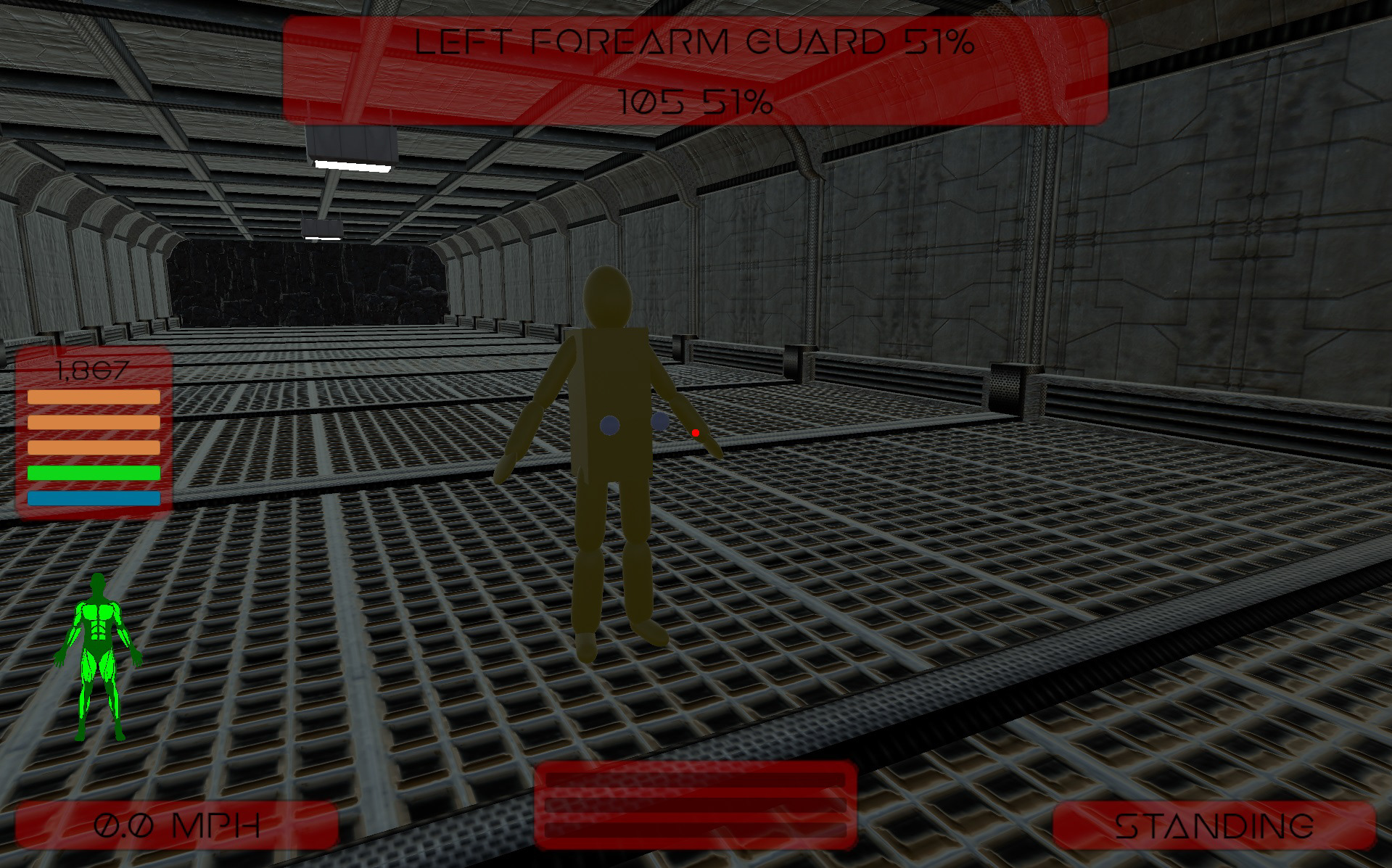

A feature of the main game is multiple vision modes. Natural light at the center, light amplification for low light areas on the left, and x-ray vision on the right.
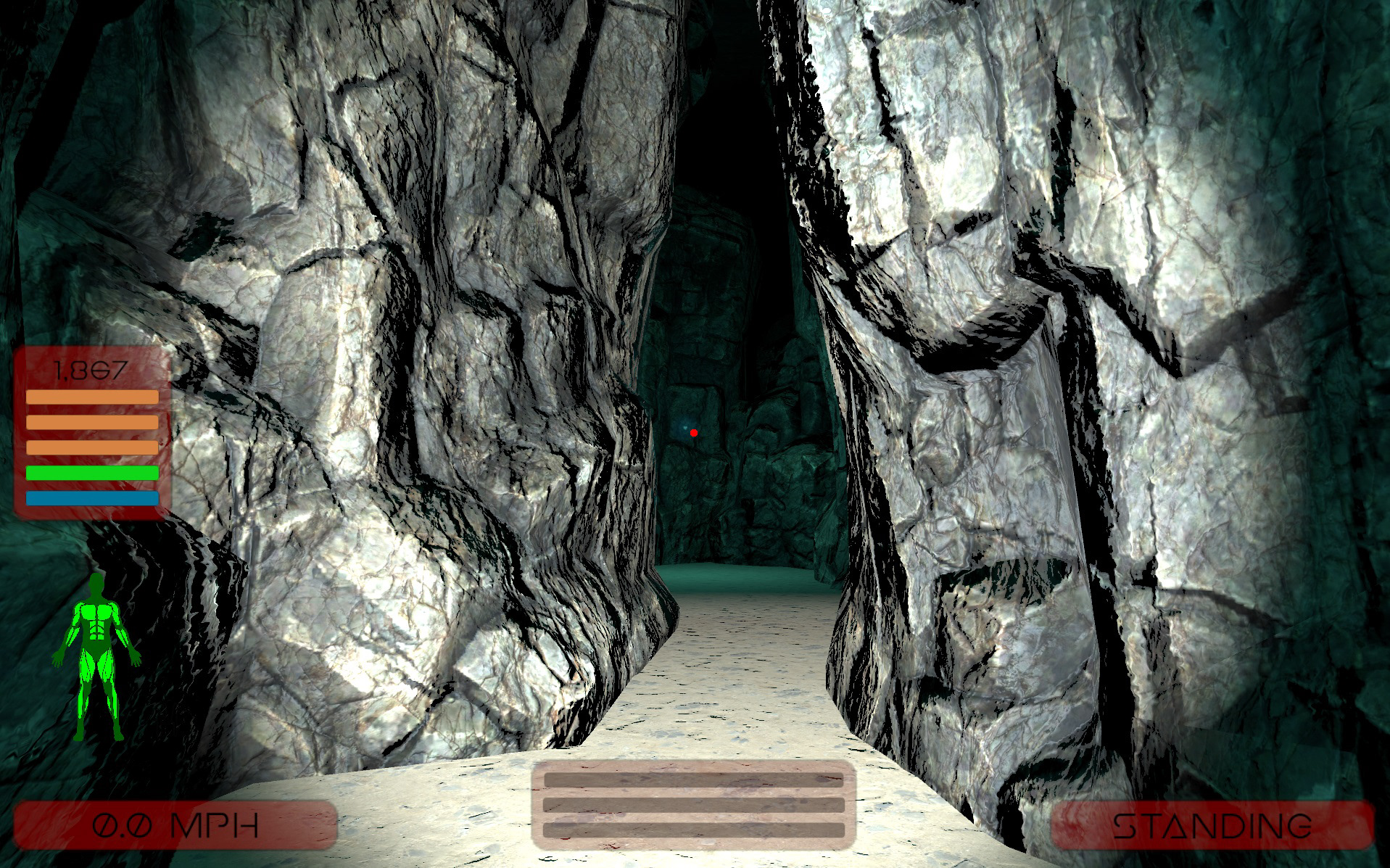

The game also featured a scope implemented via render-to-texture.
